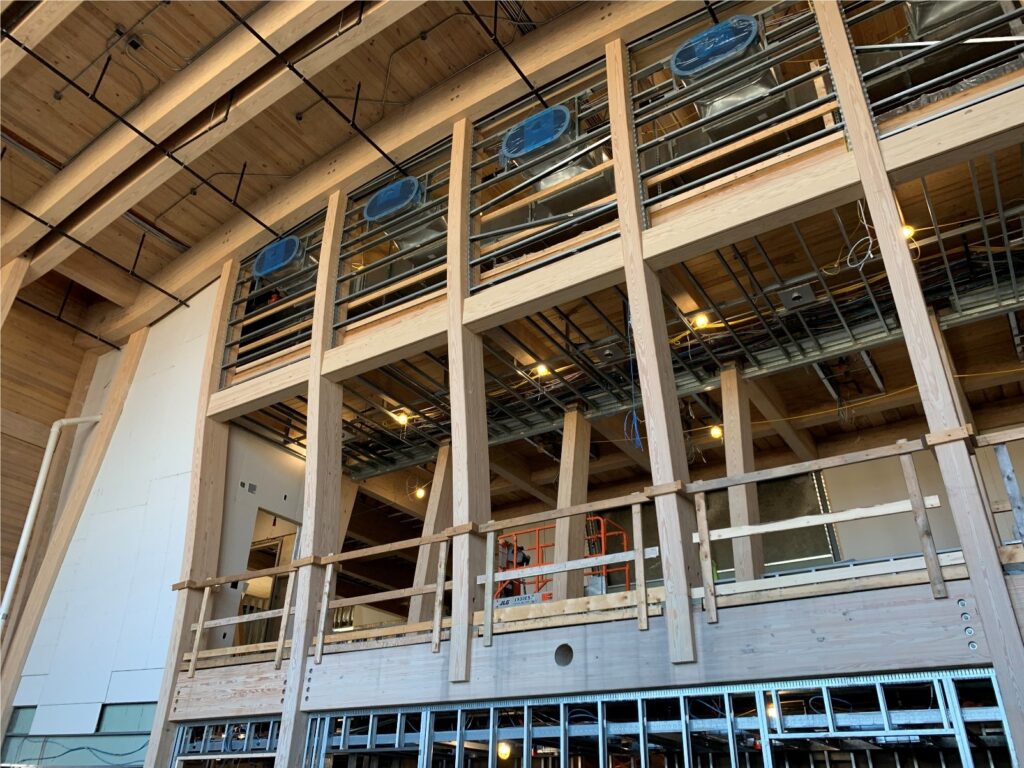Coordination Drawings: What Do They Mean to You?

The construction industry is experiencing a period of rapid transformation, perhaps the most significant since the Industrial Revolution. New technologies like advanced communication systems, GPS, robotic total stations, LiDAR, Building Information Modeling (BIM), and specialized software have become standard tools on construction sites. Innovations like 3D printing, augmented reality (AR), and virtual reality (VR) are not only here but are changing the way we build, promising safer, faster, and more cost-effective installations of everything from structural steel to ductwork. However, making the most of these advancements—and choosing the right approach for each project—can be challenging. The coordination process is essential for a building’s many components to come together smoothly and for maintaining clear communication between the design team, installation team, and owner. Yet, with many approaches and technologies available, there can be confusion around terms like “coordination drawings,” “shop drawings,” and “installation drawings.” For instance, these terms are often used interchangeably, even though they refer to distinct methods and tools, leaving design teams uncertain about which process best fits a project’s needs.
To navigate these options effectively, it’s helpful to understand the various levels of Mechanical/Electrical/Plumbing/Fire Protection (MEPFP) coordination and the advantages each brings to the table. Here’s an overview of three common approaches:
Basic Design: The Manual Process
For less complex buildings in low-risk environments (such as big-box retail), a manual process may often be the best way to go. For the non-technical participants, it involves overlaying thin paper /vellum construction drawings containing the various architectural, structural, and MEPFP components. Assuming team members can still read through all the layers of paper, they can use them to identify apparent clashes and issues.
This has the advantage of being low-cost in terms of both technology and labor. However, it can also be cumbersome and inaccurate. Trying to overlay a series of two-dimensional objects to represent a three-dimensional project can lead to diminished clarity, affecting design accuracy. Furthermore, besides physical drawing sheets shifting around, stakeholders need to be in the same physical location to have a productive conversation, leading to communication difficulties.
Intermediate Design: The Digital Process
For more complex buildings, or buildings being developed in a more complex environment such as a small city or existing development, digital technology provides some advantages over manual processes. Portable document files (PDFs) and CAD files can be overlaid on computer screens. Here, stakeholders use the same steps as the manual process, using digital images instead of paper documents.
Both formats lend to improved accuracy more so than the manual process does. CAD files, in addition, allow accurate distance measurements in their native format, and their accuracy is even better than PDF files because of the enhancements their native layer, line type, and color control offer. Digital files are also easier to update, more flexible, and more easily shared, as files can be loaded or unloaded as needed.
Even so, sometimes layers can’t be turned on or off, impacting clarity; a very complex project, for example, may appear busy, so conflicts can be harder to identify. Depending on the project’s overall size, files can also be cumbersome to manage. Finally, technology and labor costs rise because a higher level of expertise is necessary to complete digital drawings.
Advanced Design: Building Information Modeling (BIM)
Since the introduction of MEPFP BIM in the early to mid-2000s, many of the problems with accuracy, visibility, updating, and information sharing have been resolved. However, because BIM carries higher technology and operator costs owing to the need for the expertise in using it, including more up-front resources to complete the process, it’s best used on very complex projects and settings, such as urban skyscrapers, hospitals, research facilities, and similarly complex environments.
In this process, 2D installation drawings for each trade are created directly from the 3D coordination model. Using 3D digital file content created with, for example, Autodesk Revit or AutoCAD, designers build a 3D building model. They then run that model through clash detection technology, such as Autodesk Navisworks, to identify conflicts between the trades.
With BIM, Architect/Engineer design intent can be absolute. The 3D content creates ultimate visibility and accuracy, allowing for the ability to ‘fly’ through and see problems first-hand. Using screen and file sharing programs or websites, multiple stakeholders can be a part of the coordination and resolution process.
The added benefit is a buildable model that is essentially a digital representation of the finished product. The much more accurate installation drawings result in faster field installation, especially when used with prefabrication and robotic total stations in layout. The owner receives a complete digital building model that is usable for future operations, maintenance, and renovations.
Coordinating MEPFP content is critical to an efficient installation and is worth taking the time to do it correctly. Discussing the specific needs of your project from the beginning lays a foundation for all stakeholders to follow the same coordination expectations throughout the process. A BIM Execution Plan supports this alignment.
If you would like to discuss your upcoming project, or have general questions about BIM, please contact us.